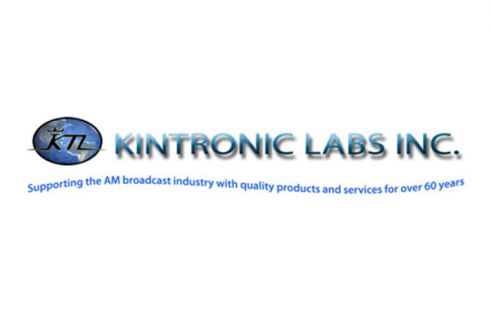
NEW DELHI: Concerned about the declining position of AM Radio service in the United States, Kintronic Labs has scheduled a meeting with Federal Communications Commission Commissioner Ajit Pai and Audio Media Chief Peter Doyle on 23 September to address critical steps towards putting AM radio on a more competitive basis with FM.
Reiterating that it had reflected this concern in its reply comments to the FCC NPRM Docket on the subject of "AM Revitalization" issued on 31 October 2013, Kintronic Labs issued a public notice to all AM broadcasters in the US yesterday in the interest of preserving this great national resource for local public media.
Kintronic President Tom F. King said, "We need full support and backing of you, the AM radio broadcasters, to be able to communicate with Commissioner Pai and Mr. Doyle how imperative it is that these measures be implemented on a fast approval track without further delay in order to put AM radio in a more competitive position with FM radio. We request that you indicate your support simply by responding to the email to which this letter was attached stating "I approve". Working together, we can restore AM radio to provide the high-fidelity audio reception that the public listening audience demands.”
He wants FCC enforcement of regulations relative to the power distribution and the consumer electronics industry that are not currently being enforced, resulting in a constantly worsening electromagnetic environment for AM radio service.
He also called for the need for parity between AM and FM receivers through the establishment of minimum technical standards for AM receivers that would become effective as soon as January 2016. It plans to demonstrate a comparison of full-bandwidth CQUAM AM stereo reception with a local FM station and with a typical AM receiver in a popular consumer multi-band receiver. The effects of adjusting the AM bandwidth from 2.5 to 10 kHz in 2.5-kHz steps will also be demonstrated.
Kintronic wants to stress the need for FCC authorisation of AM synchronous boosters. Unlike FM translators, such on-channel boosters would serve to increase the AM stations' audiences while concurrently maintaining the future viability of the band. The related technique of wide-area AM synchronization for coverage improvement will also be addressed.
Kintronic said it was absolutely essential that very close to full parity be established for new AM radio receivers versus their FM radio counterparts. This includes all key AM receiver performance attributes, including:
· Low internal noise floor, well below the average AM-band atmospheric noise level. This includes all internal synthesizer and DSP circuitry within the receiver (and in the immediate environment for integrated automotive applications).
· High overall RF sensitivity, selectivity, and dynamic range, to provide adequate amplification of weak signals, even in the presence of significant adjacent- and/or alternate-channel signals, especially in strong-signal environments. This would incorporate typical advanced, multi-stage AGC action, with appropriate interaction between the RF and IF AGC control mechanisms to maximize overall receiver dynamic range, including adaptive front-end attenuation for signal-overload protection in very strong-signal areas. Useful typical specs include: sensitivity -1 mV for 10-dB SNR; selectivity (adjacent-channel) - 25-50 dB (adaptive).
· Highly effective noise (EMI) rejection, including staged RF and IF noise blanking, accompanied by appropriate audio blanking and/or expansion when required. Such features were developed and included in Motorola chip sets in the 1990's in the AMAX program, and are easily integrated into modern, high-density AM/FM receiver chips.
· Full 10-kHz audio bandwidth capability with low detector distortion. This would obviously incorporate dynamic, signal-controlled bandwidth control (including AMAX-style adaptive 10-kHz notch filtering) as dictated by noise and adjacent-channel interference.
· Stereo capability. If the receiver has FM stereo capability, it must have corresponding CQUAM decoding for AM.Without fulfillment of the first three requirements (this also includes the associated AM antennas both for vehicles and for home use), basic AM reception will suffer significantly compared with FM. Without the last two, the output sound quality cannot be closely competitive with FM (i.e., 10-kHz full bandwidth on AM versus 15-kHz nominal for FM).
Kintronic has petitioned the FCC to mandate minimum allowable performance specifications for all AM receivers that will be manufactured and installed in new automobiles as of 1 January 2016:
Audio Bandwidth: 10 kHz typical, adaptive, with a minimum nominal bandwidth of 7.5 kHz
Signal-to-Noise Ratio: minimum 55 dB, preferably 60 dB
Sensitivity: -120 dBm for a signal-to-noise ratio (SNR) of 10 dB
Selectivity: 25-50 dB (adaptive filtering, using co-, adjacent-, and alternate-channel detection)
Dynamic Range: 100 dB
Noise Figure: 1 - 3 dB
Image Rejection: -50 dB
Intermod: IP2 , IP3 intercepts +10 to +40 dBm
IF: low with image-rejecting down-conversion, or double-conversion
Stereo Separation: minimum 25 dB